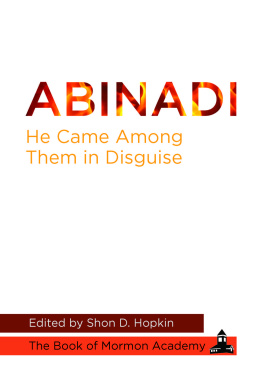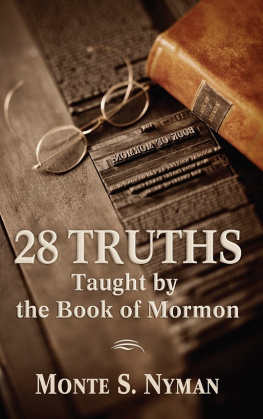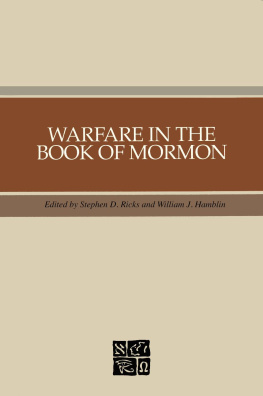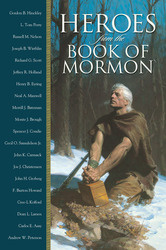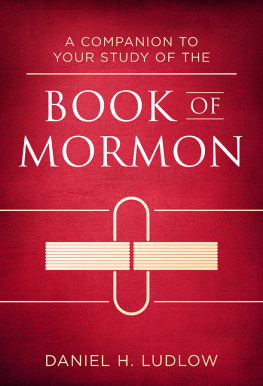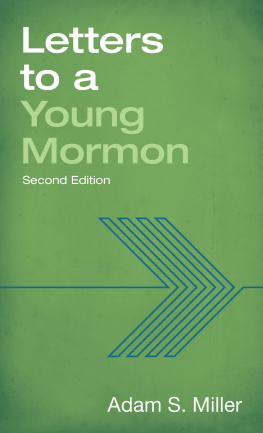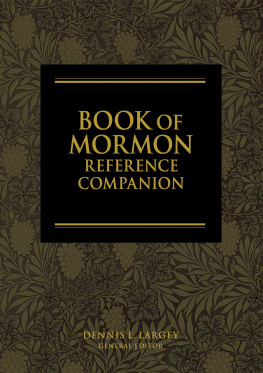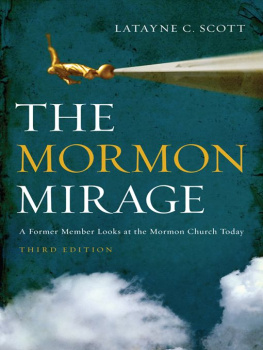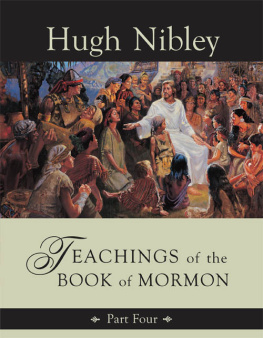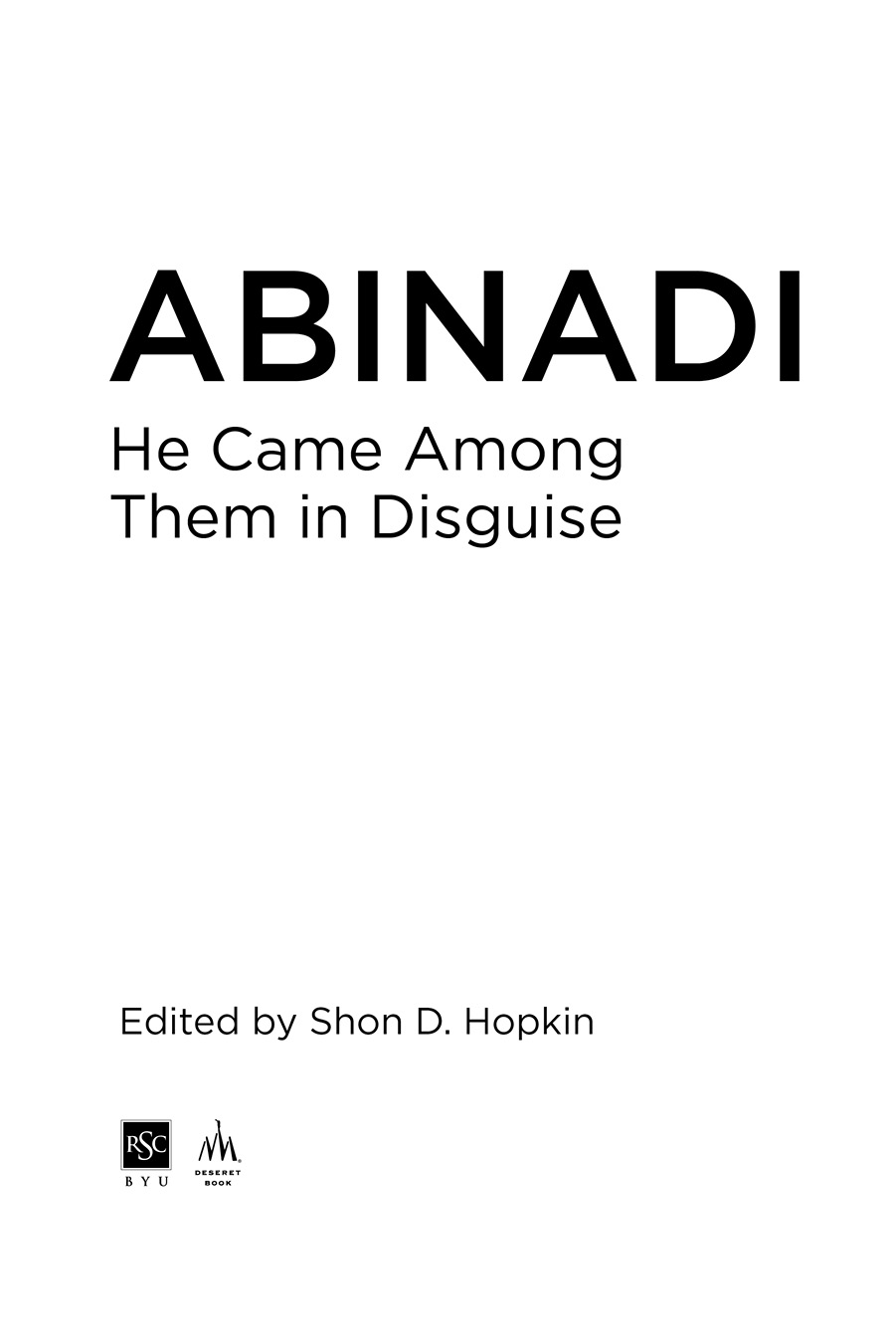introduction
Shon D. Hopkin
The Book of Mormon has received increasing attention in the last two decades from scholars who seek to understand its literary forms, its structure and teachings, and its reception history as it came forth in the nineteenth century and into the present day. Scholars inside and outside of the Latter-day Saint faith continue to use current academic tools and theories to produce work that takes the Book of Mormon seriously but that also seeks to be accessible to those who do not believe in the books divinely inspired nature. In some ways, these studies are similar to respectful, scholarly analysis of the Jewish Talmud or of the Quran. They are neither polemic in nature nor apologetically designed to provide conclusive proof that the book of scripture is of ancient origin.
This Abinadi volume is designed to build upon the foundation provided by this type of scholarship. It is written by Latter-day Saint scholars who are members of or contributors to the Book of Mormon Academy (BOMA), an academic think tank and research group begun at Brigham Young University in October 2013 to promote scholarship and teaching on the Book of Mormon. Members of the academy primarily pursue their own research agendas, but from time to time the academy produces studies that can be combined into one volume, such as this work on the Abinadi narrative.
This study attempts to begin filling a gap in attention to those figures who could be called minor prophets in the Book of Mormon, whose important teachings only span pages instead of full books but whose recorded sermons have a powerful impact on the rest of the book and on its modern-day readership. We have chosen to focus the current work on Abinadi. Giving attention to the ministry of Jacob, Enos, Samuel the Lamanite, Amulek, or Nephi (in Helaman 711) and to the short books of Jarom, Omni, and the Words of Mormon would also bear fruit and may provide material for future publications by the academy. Readers who find the critical text of Mosiah 1117 (appendix 1) useful may be pleased to learn that the academy may eventually publish a similar resource for the entire Book of Mormon.
For the purposes of this study, Abinadi seemed the logical choice as a figure whose page count is significantly smaller than his prophetic imprint. Once it is realized that Abinadis great discourse occurred chronologically prior to that of King Benjamin, the breaking of the bands of death (Mosiah 15:8, 20, 23), and many, many more.
Each chapter of this book engages the Abinadi narrative using a different scholarly tool or lens, based on the academic training and expertise of the contributing authors. Although this is often the case with edited volumes,
Since each author focuses on the same brief material, overlap in some of the content and conclusions will be found. Notwithstanding that reality, each chapter finds something unique of great value in the text, and illuminates the text in new ways. At times, the conclusions drawn by the various essays differ. The conclusions and approaches are not meant to be definitive. As will be seen, each contributing scholar has a deep appreciation for the Book of Mormon text undergirding each chapter, influencing both the approaches and the conclusions. Notwithstanding that foundational respect toward the text, each has worked to describe what is found there without either defending or attacking the Book of Mormon.
The volume begins with three chapters that help frame and explain the Abinadi narrative as a storyhow the narrative itself progresses and holds together, how it fits into the broader framework of the Book of Mormon, and how it connects with themes in the biblical book of Isaiah. In the first chapter, A Messenger of Good and Evil Tidings: A Narrative Study of Abinadi, Jared W. Ludlow provides a narratological study of the conflict sequences. This academic approach separates out and emphasizes the various aspects of a narrative: the characters, their background, and their identity; the setting of each scene of the narrative and how it contributes to the overall arc and progression of the story; the protagonists and antagonists and how the story sets them against each other; the conflict itself and how it is resolved. Ludlows skillful identification and description of these components serves as an excellent opening chapter to the volume as it clearly lays out the general contours of the Abinadi story and then highlights the contest of Abinadi versus Noah and his priests in ways that mirror the conflict of Elijah versus the priests of Baal, thus pointing to the cosmic struggle of Jehovah versus false gods.
The chapter by Daniel L. Belnap, The Abinadi Narrative, Redemption, and the Struggle for Nephite Identity, focuses on the sociopolitical situation of the Nephites throughout the Book of Mormon and, therefore, reaches a variety of differing conclusions from those of Ludlow. Rather than isolating the narrative sequence of Abinadis storyline, Belnap begins the analysis of that sequence with King Benjamins discourse, forcing the reader to ask the questions, Why did Mormon put these two stories side by side? and What were the driving concerns that motivated him to use so much precious space on Abinadis story, which was in many ways a side-trail in the overall Nephite saga?
Frank F. Judd Jr.s paper, Conflicting Interpretations of Isaiah in Abinadis Trial, takes a different point of departure than that of either Ludlow or Belnap, and serves to connect the preceding two chapters together. Although all three scholars recognize the importance of Isaiah 52:710 as an organizing feature of the conflict in Abinadis story, Judd begins with an analysis of how Isaiah 52:710 fits into the broader themes of biblical Isaiah, thus creating a foundation for the issues at stake in the contest between Abinadi and the priests. After the reader better understands the thrust of the section of Isaiah in which Isaiah 52 is locatedcommonly referred to as 2nd Isaiahwith its focus on redemption and on the work of the servant, it is easier to recognize how those themes might have been misunderstood by Nephites who were relying on the teachings of Isaiah.
The second section of the book moves to three intertextual studies, each with varying motives and approaches. John Hilton IIIs chapter, Abinadis Legacy: Tracing His Influence through the Book of Mormon, might more appropriately be called an intratextual study because it analyzes the influence of Abinadis teachings over time as they were used by various prophetic figures within the Book of Mormon. Hiltons paper is placed as the first of the three intertextual studies for two reasons. First, Hilton devotes space in his essay to fundamental issues connected to intertextuality, introducing that field of study in ways that will help readers understand all three contributions. Second, since he looks at intertextuality by subsequent writers in the Book of Mormon, his study continues to demonstrate the relevance of Abinadis narrative in the overall work and to show that Abinadis teachings fit into Mormons larger goals. One of the interesting contributions provided by Hilton is evidence that King Benjamins discourse has clear textual connections with Abinadis teachings, a surprising conclusion since there is no evidence that Benjamin or someone else residing in Zarahemla could have been present for Abinadis sermon. Hilton provides possible explanations for this unexpected intratextual influence.
Nicholas J. Fredericks chapter, If Christ Had Not Come into the World, moves from intratextuality to intertextuality, analyzing ways in which Abinadis discourse appears to build upon New Testament passages. Rather than shy away from these apparently anachronistic quotations and allusions, Frederick challenges readers of the Book of Mormon to seek them out and then skillfully demonstrates how recognizing these passages can enhance both ones understanding and appreciation of the Book of Mormon text. As he demonstrates, Abinadi relies on wording found in the New Testament without simply repeating New Testament arguments. Rather, he adopts New Testament language, sometimes combining it from a variety of New Testament sources, and uses that language to craft new arguments, strengthened by the allusions to New Testament language and logic, but not limited or controlled by them.

